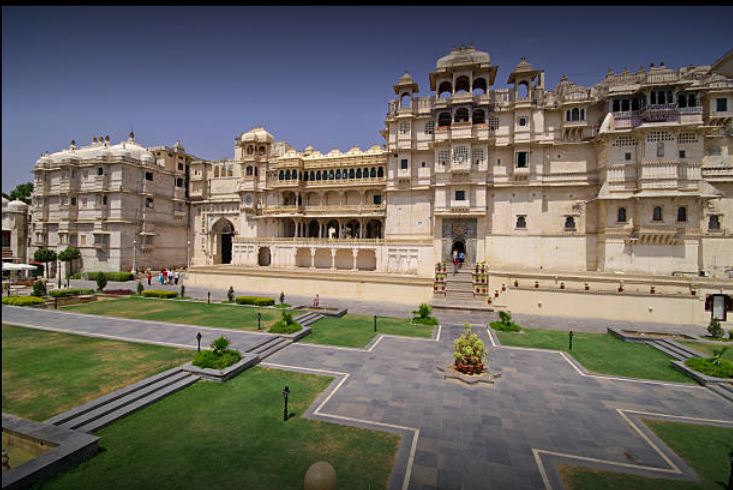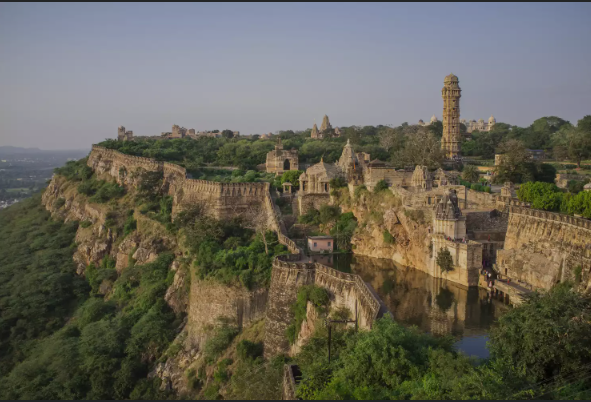The state of Rajasthan is the biggest in the Indian republic and was initially known by the name Rajputana, which translates to “the country of the kings.” It extends over 342,239 square kilometres, equivalent to 10.4 per cent of India’s total land area. Nevertheless, despite its enormous size, it is covered by the Thar Desert, which is part of the Great Indian Desert. The Sutlej and Indus river valleys are roughly on opposite sides of the Thar Desert. This is one of the most visited tourist places in Rajasthan. The Indian state of Rajasthan has been given the nickname “the land of the of Kings” because it was placed at the forefront of Indian culture when kings ruled the country.
Hawa Mahal
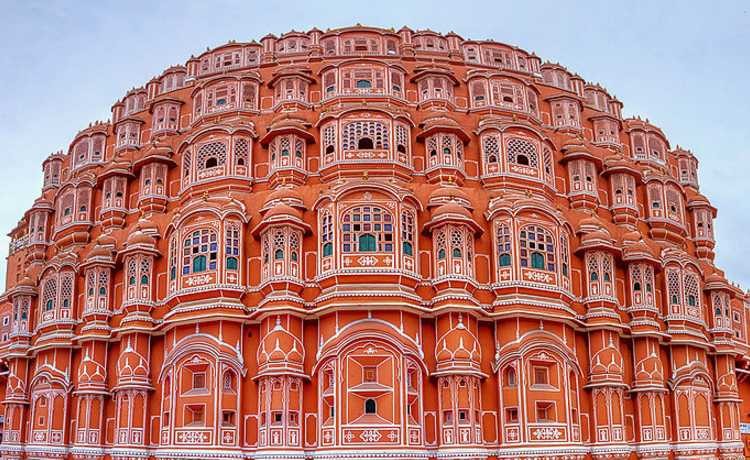
In 1799, Maharaja Sawai Pratap Singh constructed the enormous structure known as the Hawa Mahal. This building may be found at the junction of the major road in Jaipur, known as Badi Chaupad. The distinctive construction of the Hawa Mahal, a mesh of tiny windows that enabled a cool breeze to enter the palace and kept the castle pleasant throughout the hot summer months, is where the term “Hawa Mahal” originates from. It is one of the most visited tourist places in Jaipur & Rajasthan. The tradition of the country required that the ladies of the royal family be able to see the celebrations taking place on the streets without being seen by anyone outside the palace. The primary motivation for building the court was to fulfil this need. It reaches the “zenana” and is situated on the outskirts of the City Palace in Jaipur. The Hawa Mahal was constructed entirely out of red sandstone, which emits a pinkish colour when exposed to sunlight. This was done to maintain the visual language of Jaipur, often known as the “Pink City.” It is often considered the highest structure ever erected without a foundation anywhere in the world. Even though it is attributed to the Rajput style of architecture, it also has highly significant influences from the Mughal style, which can be seen in the facade’s symmetry.
City Palace, Udaipur
The City Palace in Udaipur is the biggest palace complex in the state of Rajasthan, and it is also one of the architectural marvels of Rajasthan. It was built on top of a hill in a style that combines Rajasthani and Rajput architecture. It offered a breathtaking view of the city and the area around it. The palace complex is next to some historically significant buildings, including the Lake Palace, Jag Mandir, Jagdish Shrine, Monsoon Palace, and Neemach Mata temple. These buildings all look out over Lake Pichola. In popular culture, these sites are connected with the James Bond movie Octopussy shooting in 1983, which took place inside the Aravali mountain range. Octopussy was released in 1983. The complex of the City Palace, which can be found at a height of 1,962 feet, was constructed by the Sisodia Rajput family over 22 generations over a significant period of time beginning in the year 1559. Udai Singh II, along with some subsequent Maharanas, made substantial contributions to building this spectacular structure. The complex comprises eleven palaces and other facilities, all of which have a similar architectural style. The granite and marble structure of the City Palace provides a striking contrast to the rustic natural settings in which it is located, which the Aravalli Mountains form.
Mehrangarh Fort, Jodhpur
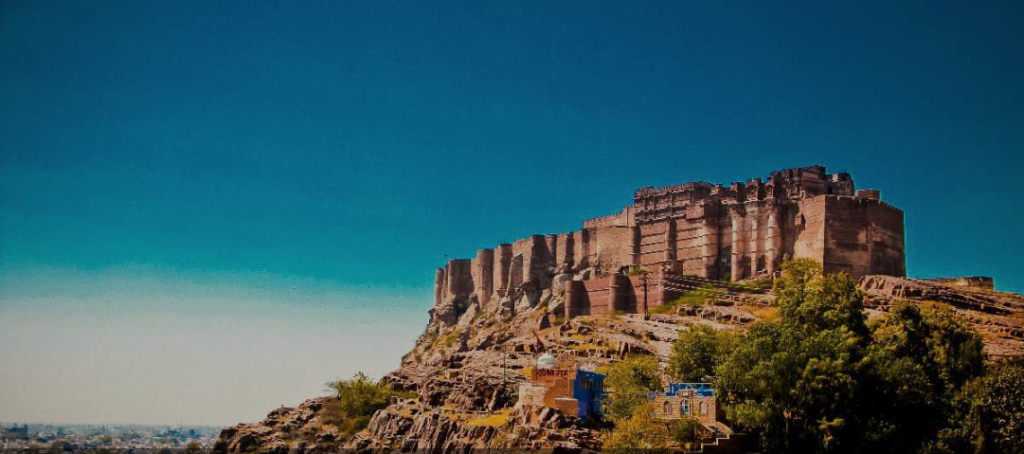
The Mehrangarh Fort is located on a cliff perpendicular to Jodhpur and 400 feet above the city’s skyline. Its height of 100 feet distinguishes it. The burnished red sandstone is intimidating and unconquerable. Yet, it also has a peculiar and eerie beauty that begs to be explored. A great deal of literature is devoted to the Citadel of the Sun because, in all honesty, it is one of the most spectacular tourist places in Rajasthan. Due to the enormous dimensions of the structure, Rudyard Kipling referred to it as “the labour of giants.” It is widely recognised today as one of India’s forts that have been maintained the finest. The Mehrangarh fort has seven gates that may be utilised to access the complex’s interior. These seven gates, which were constructed by various kings in celebration of their victories against the forces of Jaipur and Bikaner, are named after those kings. Tourists from all over the globe are drawn to the fort because of its beautiful carvings adorn its walls, expansive courtyards, remarkable history, spectacular palaces, museums, and galleries.
Sariska Tiger Reserve
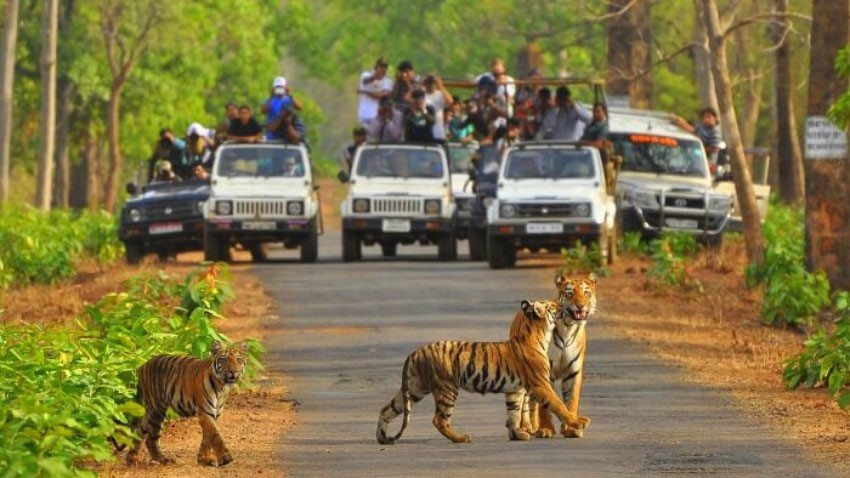
The Sariska Tiger Reserve is tucked away in the Aravali Hills. It has a total area of 800 square kilometres. It comprises meadows, dry deciduous trees, towering cliffs, and rocky scenery. It doesn’t matter whether you want to go on camel safaris, do some shopping in the neighbouring towns, see some ancient buildings, or observe animals; the Sariska Wildlife Sanctuary is the ideal location for all of these activities. It has a significant quantity of mineral resources, including copper. Marble mining continues to be an environmental risk despite an injunction issued by the Supreme Court in 1991 prohibiting mining in the region. During a jeep safari in the Sariska tiger reserve, you will get the opportunity to see magnificent creatures going about their business, most notably tigers. In addition, you can go to the Kankwadi fort, a location that can only be reached by jeep safari. In addition to going on a safari, you will have the opportunity to go bird watching while you are there. Since 2005, when it was discovered that all of the area’s tigers had vanished, the Sariska Tiger Reserve has been a remarkable success thanks to the reintroduction of the tiger and the subsequent success of its breeding programme. In the years 2006 and 2007, the National Tiger Conservation Authority (NTCA) and the Department of Forest in Rajasthan collaborated to develop the reintroduction strategy, which included the formation of a core group.
In this region, eight tigers were reintroduced between the years of 2008 and 2011, and each one was assigned a number. ST2 had her first litter in 2012, which consisted of two female cubs. In 2014, ST2 had another litter consisting of two cubs, and in the same year, ST10 had its first litter, which also consisted of two cubs.
The radio-collared Tigers are tracked using VHF ground tracking, which incorporates homing in and triangulation techniques. This monitoring occurs around the clock. There have been seventeen devoted teams sent out, and each one of them has a forest guard and a research assistant accompanying the vehicle. Every party receives its own wireless, GPS, and datasheet capabilities.
Chittore Fort
The Chittorgarh Fort in Rajasthan is one of the best tourist places in rajasthan. It was constructed in the 7th century A.D. by local Maurya monarchs, who are sometimes mistaken for Maurya rulers who ruled the empire. The Chittorgarh Fort, sometimes known simply as Chittor, is an excellent illustration of the prevalent Rajput architectural style. It is located on a hill 590 feet high and covers 692 acres. The subsequent kings of the Maurya line are responsible for constructing a significant number of entrances into the formidable structure of the fort. Mewar’s former capital, the Chittorgarh Fort, may now be found inside the city of the same name. Chittorgarh was once the capital of Mewar. The Chittorgarh Fort is replete with stories of bravery and self-sacrifice. It is an excellent example of Rajput tradition and ideals in their purest form. The majestic structure of the Chittorgarh Fort led to its selection as a UNESCO World Heritage Site in 2013. It is believed that Chitrangad Mori, a member of the Maurya dynasty, was the one who laid the foundation for Chittorgarh Fort in the seventh century. This would place the fort’s origins in India. In the middle of the eighth century, Bappa Rawal, the founder of the Mewar dynasty, gained control of the defence and turned it into his residence. However, other versions of what took place contradict one another. Either the fort was a dowry present, or he won the war that led to its capture. Despite this, in the year 734, he chose to make the fort the capital of his expansive new empire, which at that time extended from the state of Gujarat to Ajmer. The defence encompasses a land area of 700 acres and has a circumference of 13 kilometres. Lime mortar is used to construct the walls, which may reach heights up to 500 metres above ground level.
Rajasthan is a state on practically everyone’s wish list, whether they want to see it in its current state of evocative ruins or its previous magnificence. The biggest state in India is home to numerous magnificent royal remains that transport you to a time when its kings were at the height of their power. It is known for its vivid hues, battle-scarred forts, gorgeous dunes, and somewhat arrogant pride and dignity. The locations to visit in Rajasthan, known for their ornate forts and palaces, are consistently ranked among India’s most popular tourist attractions.
Other tourism places in Rajasthan:
Ranthambore Tiger Reserve


